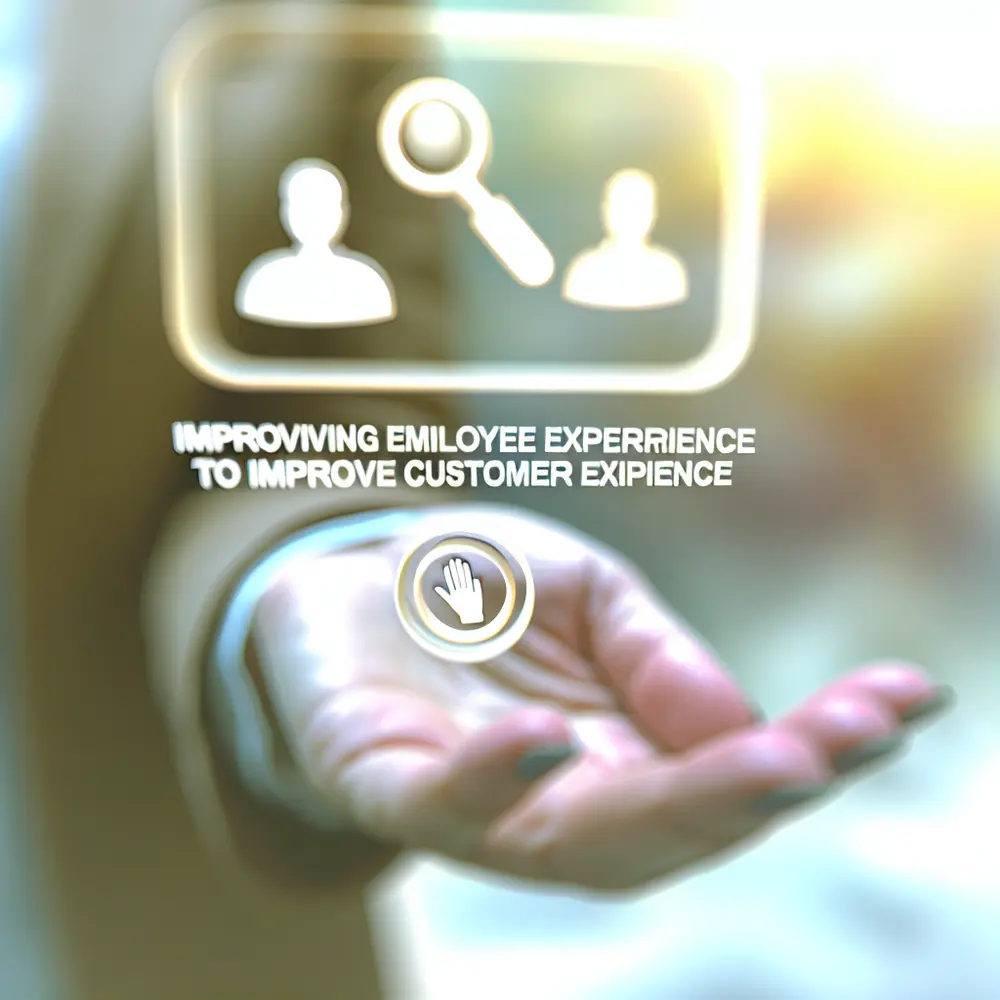The connection between Employee Experience (EX) and Customer Experience (CX) is increasingly recognized as essential in today’s business landscape. Many organizations struggle to understand how a motivated workforce can translate into satisfied customers. When you prioritize EX, you establish a solid foundation that ultimately enhances CX, leading to greater customer loyalty and satisfaction.
It’s crucial to recognize that team culture significantly influences both EX and CX. When employees feel recognized and engaged, they naturally extend that positivity to their customer interactions. However, without fostering a collaborative and supportive work environment, organizations may miss opportunities to build meaningful customer relationships.
Moreover, effective leadership is a critical factor in bridging the gap between EX and CX. Leaders who create open lines of communication and trust help to facilitate an environment where employees feel comfortable expressing themselves. By addressing these crucial elements, leaders can cultivate a more engaged workforce that is better equipped to serve customers effectively.
Understanding the Connection Between EX and CX
You recognize that a positive employee experience is the cornerstone of outstanding customer service. Companies that invest in their employees see significant improvements in stakeholder interactions. For instance, the consulting firm Visionary Partners improved employee engagement by 30% through tailored EX initiatives. This led to a 25% increase in customer satisfaction scores, illustrating the direct correlation between EX and CX.
Team culture is vital in fostering the link between EX and CX. Employees who feel valued and supported are more likely to deliver exceptional service. For example, at the creative agency InnovateNow, uplifting the team culture increased collaboration and led to a 15% boost in team productivity. This increased productivity translated to faster customer service resolution times, enhancing overall customer experience.
Leadership plays a fundamental role in shaping the dynamics between EX and CX. Leaders who promote a shared vision help to create an atmosphere of trust and safety. For example, the best customer service platforms can ensure that employees receive adequate tools to support their roles effectively, resulting in better interactions with clients.
Aligning EX with business strategy ensures long-term success. Leaders must understand that enhancing employee experiences is not just a human resources initiative. The retail chain ShopSmart integrated EX initiatives into their core business strategy, resulting in a 30% increase in sales year-over-year, showcasing the financial impact of investing in employees.
Regular assessments of initiatives that affect EX and CX are key. For instance, the health company HealthPlus implements quarterly feedback surveys. These insights have resulted in a 20% improvement in service delivery due to better alignment with employee needs and preferences, ultimately enhancing customer interactions.
Employee Well-being vs. Customer Satisfaction: A Case Study
The relationship between employee well-being and customer satisfaction is well documented. At the online retailer TrendyShop, enhancing EX through wellness programs led to a 50% drop in employee burnout. This increase in well-being directly contributed to a 15% increase in customer satisfaction metrics, demonstrating the importance of a happy workforce.
The Role of Business Strategy in Enhancing EX and CX
You understand that a well-defined business strategy is critical for enhancing both EX and CX. By integrating these objectives, organizations cultivate a symbiotic relationship that boosts performance and overall engagement. For example, the benefits of a CRM integrated with Whatsapp for small businesses can lead to enhanced engagement and better service delivery.
Effective leadership is paramount to linking EX and CX. Leaders who cultivate an inclusive environment foster an empowered workforce. For instance, at Elite Services, leadership development programs resulted in a 35% improvement in employee satisfaction, which directly translated to a noticeable increase in customer satisfaction as well.
Digital tools can also play a significant role in enhancing both experiences. Implementing an omnichannel support platform, as done by TechConnect, can facilitate seamless communication, reducing average response time by 40% and significantly enhancing the customer journey. Explore Nexloo’s Omnichannel Support Platform to learn how it can enhance your strategic approach.
Regular assessment of business strategies is essential. The firm EfficientWorks collects feedback to understand employee engagement and modifies their strategies accordingly, resulting in a 25% growth rate year-over-year in customer base.
Investing in the integration of EX and CX is not just a trend; it is a business imperative. Therefore, leaders must prioritize these areas in their planning processes to thrive in a competitive landscape.
Building a Strong Team Culture: The Foundation for EX and CX
You recognize the importance of a robust team culture in enhancing Employee Experience (EX) and Customer Experience (CX). Leaders must create collaborative environments where team members feel valued and engaged. For instance, Bright Future, a tech startup, increased employee engagement scores by 30% through team-building initiatives, leading to more satisfied customers.
Empowering team members through effective leadership fosters open communication. A company like ImagineCo implemented monthly feedback sessions that encouraged open dialogue and resulted in 20% more ideas for improving customer service, intensifying the connection between employee and customer experiences.
Feedback mechanisms help refine team culture. By regularly surveying employees, as conducted by SuperTech, leaders can identify improvement areas, enhancing morale. Their follow-up actions resulted in a 15% boost in Net Promoter Score (NPS).
Training programs play a crucial role in nurturing team culture. At ProGrowth, innovative training approaches helped build a knowledgeable workforce, enabling staff to resolve customer issues 25% faster, thereby improving overall CX.
Collaboration across functions fosters a unified approach. Cross-functional initiatives at Global Solutions led to seamless experience creation, where employees’ insights led to innovations that resolved customer pain points, resulting in a 20% increase in customer retention.
Leadership’s Impact on Employee and Customer Experiences
You understand that effective leadership is essential for improving employee experience (EX) and customer experience (CX). Leaders influence the work environment and, in turn, how employees engage with customers. Companies like InnovateCorp witnessed a 30% increase in employee engagement after introducing leadership enhancement programs, resulting in improved customer satisfaction.
Leadership plays a crucial part in addressing employee needs. At ProgressTech, transparent communication from management resulted in better employee morale and a 17% increase in customer satisfaction after implementing feedback-driven initiatives.
Aligning business strategies with leadership practices is vital for enhancing both experiences. Leaders at ServiceSync advocate for a customer-first mindset, resulting in our employee retention rate rising by 25%, which directly improved customer interactions.
Utilizing metrics to assess EX and CX is essential. Leaders at FutureWorks use analytics to track improvements in employee engagement and customer feedback. Companies that leverage data often notice significant improvements in service delivery and employee satisfaction.
Investing in omnichannel platforms enhances the synergy between EX and CX. At ConnectNow, implementing a platform resulted in a seamless communication channel between teams, leading to quicker resolutions and a 20% improvement in overall customer experience metrics.
Actionable Strategies to Improve Employee Experience
You are aware that enhancing employee experience (EX) hinges on actionable strategies focusing on various core areas. For example, fostering open communication can substantially improve workplace satisfaction. At EngageMe, implementing regular feedback sessions increased employee happiness scores by 35%, impacting customer service positively.
Foster Open Communication
Encourage feedback at all levels. When employees feel heard, satisfaction increases. Monthly check-ins at CreativeMinds lead to a significant rise in employee engagement, ultimately improving customer service metrics by 20%.
Invest in Leadership Development
Quality leadership is essential for creating a supportive work environment. At TeamDrive, dedicated training in emotional intelligence improved overall team morale by 25% and contributed to better customer experiences.
Enhance Team Culture
Encouraging teamwork fosters a sense of belonging. At Unity Corp, implementing team-building activities increased collaboration and resulted in a 30% improvement in customer satisfaction ratings.
Implement Recognition Programs
Recognizing employee contributions boosts engagement and morale. At Stellar Services, they implemented an employee of the month initiative, leading to a 15% increase in motivation that directly enhanced customer experiences.
Leverage Technology for Continuous Improvement
Using technology strategically can refine both EX and CX. The HealthTech Group adopted an omnichannel support platform, improving communication and increasing responsiveness to customer queries by 40%.
Measuring the Success of EX Initiatives and Their Effects on CX
To measure effective Employee Experience (EX) initiatives, establish clear metrics aligned with your business strategy. For instance, when Tech Innovations implemented a new feedback mechanism, they saw engagement metrics rise by 30%, correlating with improved CX.
Leadership actively drives EX initiatives. At WorkJoy, leadership’s commitment to open communication has translated into higher employee morale and a 20% increase in customer satisfaction scores.
Monitoring employee engagement levels is crucial. Tools such as regular pulse surveys at Innovate Solutions led to identifying key areas needing focus, leading to a 15% drop in churn and improved customer satisfaction.
Evaluating the tangible impacts of EX improvements on CX metrics is essential. When FitPro connected their employee engagement data to customer feedback, they found that a 25% increase in employee satisfaction corresponded with an 18% rise in NPS.
Cross-department collaboration enhances successful EX initiatives. At Corpex, HR and customer service aligned their strategies, leading to a 30% improvement in service delivery and fostering a culture that values employees and customers alike.
Case Studies: Companies Excelling in EX and CX
Companies that have successfully integrated EX and CX showcase remarkable results. For instance, Salesforce promotes EX through inclusivity, leading to high customer satisfaction scores. This strategy results in a loyal customer base that upholds Salesforce’s brand reputation.
Zappos exemplifies employee empowerment. By facilitating proactive service, they enjoy remarkable customer interactions. Their leadership fosters a culture that not only boosts employee morale but also places customer service at the forefront.
Starbucks prioritizes leadership commitment to EX via training programs, which contribute to meaningful customer connections. Consequently, employees feel valued, enhancing the overall customer experience.
Moreover, Adobe leverages continuous feedback to encourage innovation and growth. Their commitment fosters a motivated workforce, which leads to superior customer service and strengthened client relationships.
These case studies highlight the strong link between EX and CX. Companies investing in solid strategies reap benefits in both customer loyalty and satisfaction. Leaders must prioritize EX to achieve exemplary outcomes in CX, thus solidifying competitive positioning in the market.
Conclusion: The Common Thread Between EX and CX
To elevate customer experience (CX), focus on employee experience (EX). A motivated workforce is crucial for delivering superior service. Leaders must recognize that cultivating a thriving team culture fosters enthusiasm and dedication, influencing customer perceptions positively.
Integrating employee-focused initiatives into business strategies yields better customer satisfaction. Prioritizing employee engagement is fundamental for strategic planning, not merely an auxiliary initiative.
Leadership commitment bridges EX and CX gaps. By advocating for employee well-being, leaders can cultivate positive feedback loops that enhance customer interactions. This alignment reinforces organizational value, encouraging cultural changes throughout the business.
Investing in tools that streamline communications further supports both experiences. Omnichannel support platforms help businesses provide seamless experiences, ensuring employees communicate effectively with customers.
Ultimately, a shared focus on improving both EX and CX establishes a strong foundation for long-term success. Companies prioritizing employee well-being inadvertently create a resilient, customer-centric culture. The synergy between these elements is vital for thriving in today’s market, enabling organizations to adapt and respond more effectively to customer demands. Explore the best solutions on the market for WhatsApp Business.









